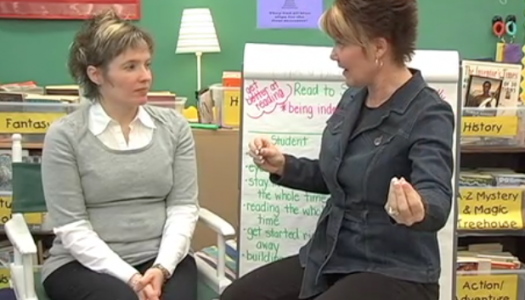Launching Read to Self With An I-Chart
Join Our Community
Access this resource now. Get up to three resources every month for free.
Choose from thousands of articles, lessons, guides, videos, and printables.
As you'll see in this video, we used to ask the class to provide wording for the behaviors that should go on the I-chart for Read to Self. We no longer brainstorm desired behaviors with students. After we consistently experienced them generating random lists of unrelated behaviors, requiring us to redirect, reteach, and redo lessons that were lasting much too long, we moved to telling students ourselves (you'll see that we could have saved three minutes if we'd done that here). If you were in our classrooms today, you'd see that we write two behaviors on the I-chart: Read the whole time and Stay in one spot. Before each practice during the launching phase, we add another of the desired behaviors until they are all on the chart. If students have extended prior experience with Daily 5, we might start with the first three or four, subsequently adding on after those.
Classroom charts vary slightly, reflecting each group's personality, but we manage to get these expectations on every chart in one form or another:
- Read the whole time.
- Stay in one spot.
- Get started right away.
- Read quietly the whole time.
- Build stamina.
- Choose a successful spot.
- Ignore distractions.
All items on the chart are written in the language of desirable behavior. Michael Grinder, national director of Neuro Linguistic Programming in Education, teaches that the brains of our most at-risk students often process only the end of statements. Therefore, writing No walking around, No talking, and No getting a drink may have a result that is far from what will meet our expectations.






